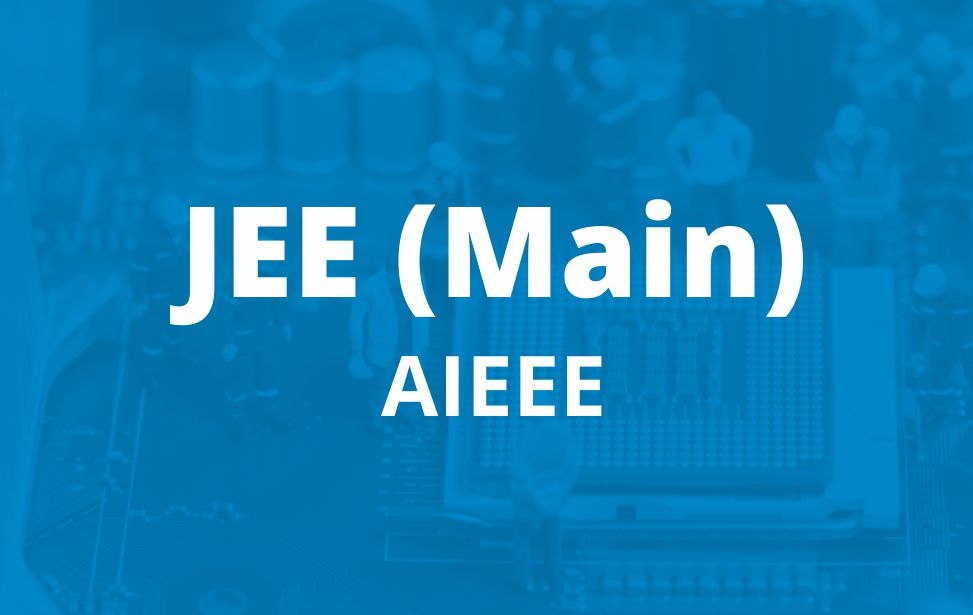Joint Entrance Examination also commonly known as JEE Main is a national level engineering entrance exam which acts as a gateway for admission to engineering colleges in India like IITs, NITs, GFTIs, etc.
NTA is responsible to conduct JEE Main from the year of 2019 onward. NTA will conduct JEE Main exam twice a year. The JEE Main 2020 exam will be conducted in online mode.
Eligibility Criteria:
Age:
- a.There is no age limit for the candidate.
- b. The candidates should satisfy themselves about the eligibility of age limit requirements of the Institutes in which they desire to take admission.
Educational Qualification:
- a. Candidates must have at least 5 subjects in class 12 exam or equivalent exam.
- b. Candidates who have passed 10+2 exam with Maths & Physics as compulsory subjects along with one of the Chemistry/Biology are eligible.
JEE Mains Exams Syllabus:
The JEE Main syllabus is almost the same as the NCERT syllabus for class 11 and class 12.
Mathematics:
Unit 1: Sets, Relations and Functions
- Unit 2: Complex Numbers and Quadratic Equations
- Unit 3: Matrices and Determinants
- Unit 4: Permutations and Combinations
- Unit 5: Mathematical Induction
- Unit 6: Binomial Theorem and Its Simple Applications
- Unit 7: Sequences and Series
- Unit 8: Limit, Continuity and Differentiability
- Unit 9: Integral Calculus
- Unit 10: Differential Equations
- Unit 11: Coordinate Geometry
- Unit 12: Three Dimensional Geometry
- Unit 13: Vector Algebra
- Unit 14: Statistics and Probability
- Unit 15: Trigonometry
- Unit 16: Mathematical Reasoning
Physics:
Section A:
- Unit 1: Physics and Measurement
- Unit 2: Kinematics
- Unit 3: Laws of Motion
- Unit 4: Work, Energy and Power
- Unit 5: Rotational Motion
- Unit 6: Gravitation
- Unit 7: Properties of Solids and Liquids
- Unit 8: Thermodynamics
- Unit 9: Kinetic Theory of Gases
- Unit 10: Oscillations and Waves
- Unit 11: Electrostatics
- Unit 12: Current Electricity
- Unit 13: Magnetic Effects of Current and Magnetism
- Unit 14: Electromagnetic Induction and Alternating Currents
- Unit 15: Electromagnetic Waves
- Unit 16: Optics
- Unit 17: Dual Nature of Matter and Radiation
- Unit 18: Atoms and Nuclei
- Unit 19: Electronic Devices
- Unit 20: Communication Systems
Section B:
- Unit 21: Experimental Skills
Chemistry:
Section A: Physical Chemistry
- Unit 1: Some Basic Concepts in Chemistry
- Unit 2: States of Matter
- Unit 3: Atomic Structure
- Unit 4: Chemical Bonding and Molecular Structure
- Unit 5: Chemical Thermodynamics
- Unit 6: Solutions
- Unit 7: Equilibrium
- Unit 8: Redox Reactions and Electrochemistry
- Unit 9: Chemical Kinetics
- Unit 10: Surface Chemistry
Section B: Inorganic Chemistry
- Unit 11: Classification of Elements and Periodicity in Properties
- Unit 12: General Principles and Processes of Isolation of Metals
- Unit 13: Hydrogen
- Unit 14: s- Block Elements (Alkali and Alkaline Earth Metals)
- Unit 15: p- Block Elements
- Unit 16: d and f- Block Elements
- Unit 17: Coordination Compounds
- Unit 18: Environmental Chemistry
Section C: Organic Chemistry
- Unit 19: Purification and Characterisation of Organic Compounds
- Unit 20: Some Basic Principles of Organic Chemistry
- Unit 21: Hydrocarbons
- Unit 22: Organic Compounds Containing Halogens
- Unit 23: Organic Compounds Containing Oxygen
- Unit 24: Organic Compounds Containing Nitrogen
- Unit 25: Polymers
- Unit 26: Biomolecules
- Unit 27: Chemistry in Everyday Life
- Unit 28: Principles Related to Practical Chemistry

